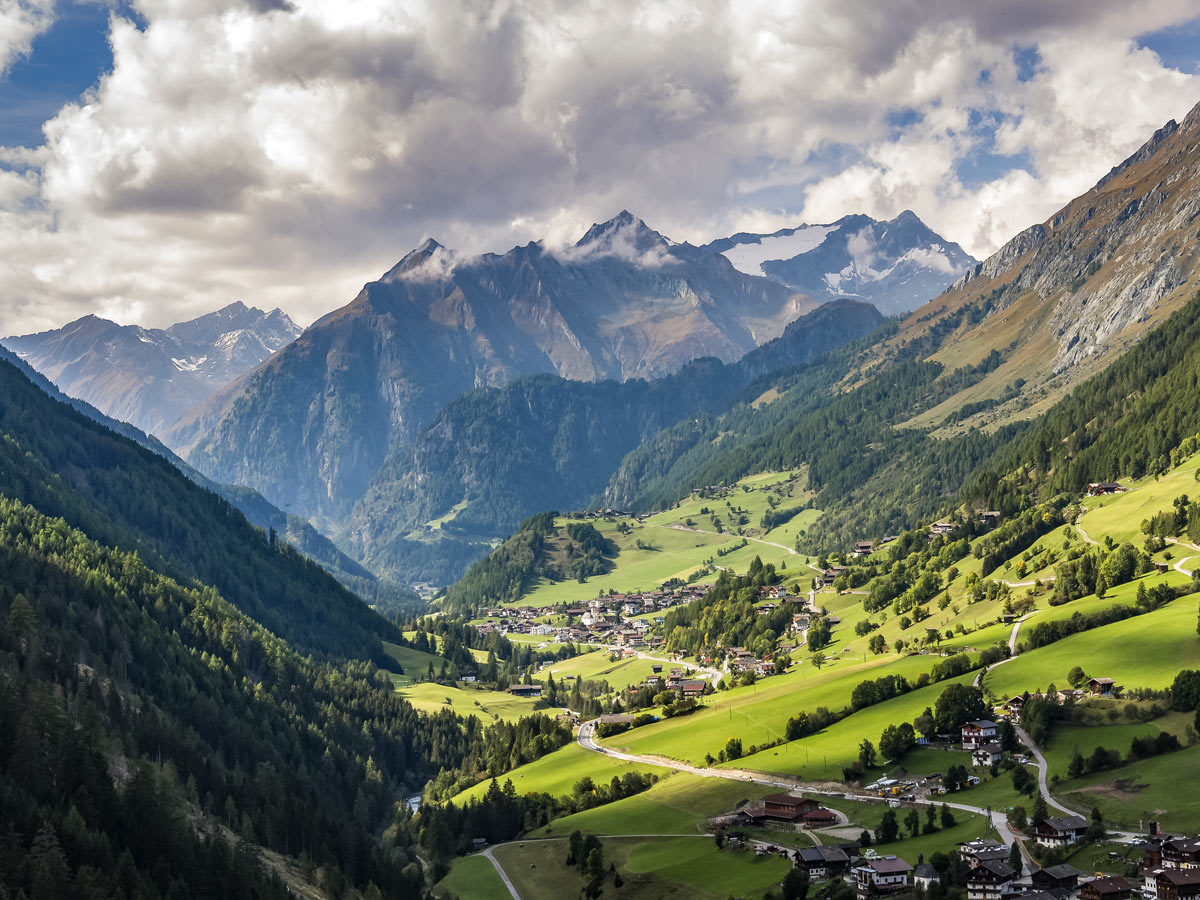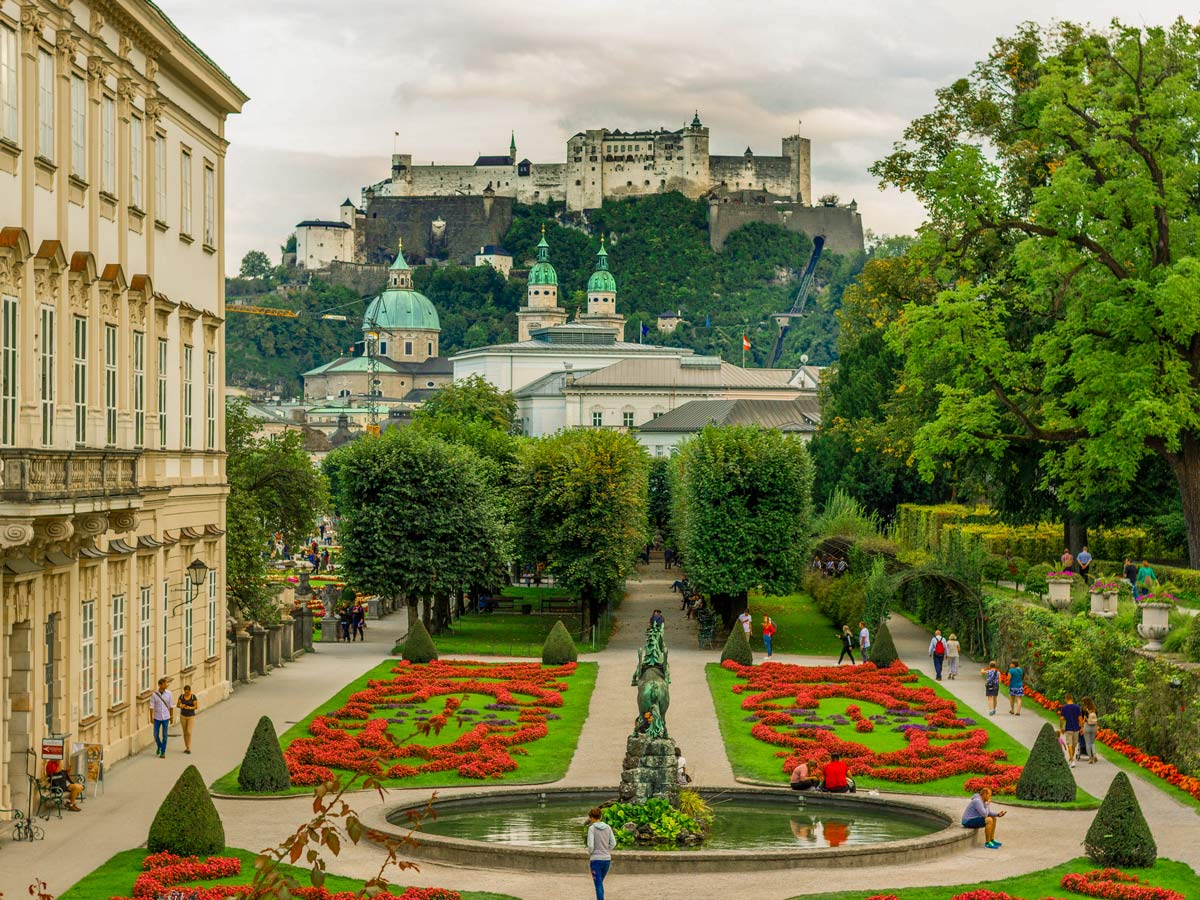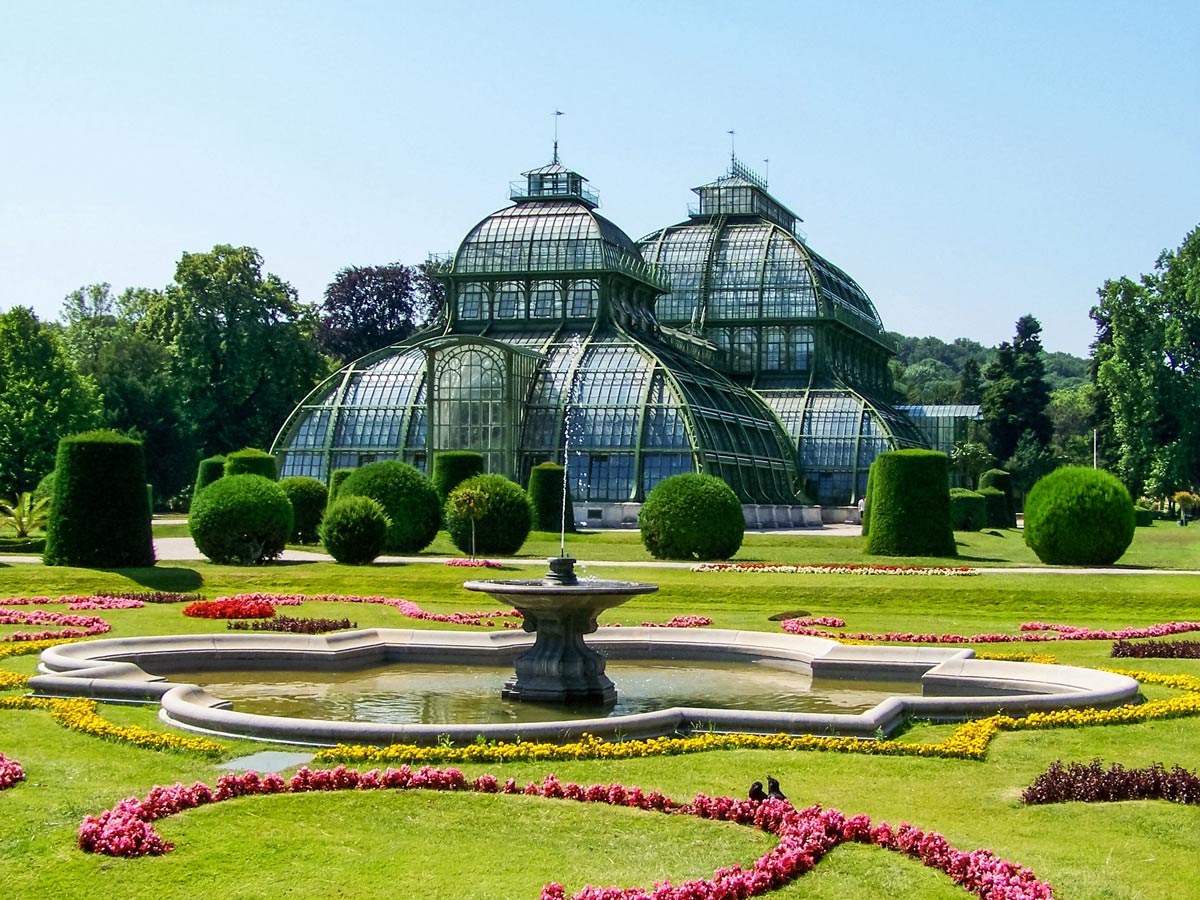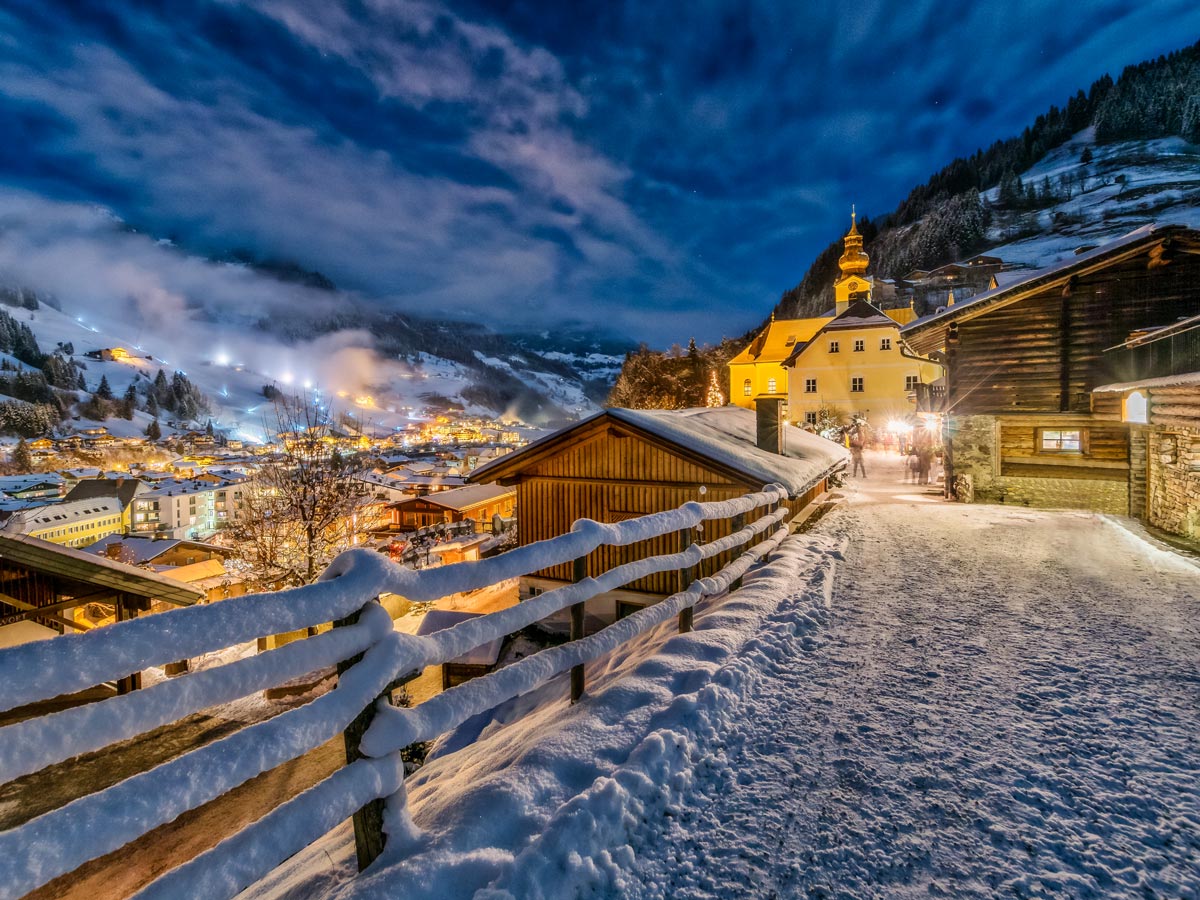Intro: Take our Austria travel trips and plan a flawless adventure to a country that effortlessly combines urban history with natural splendour. Ski, hike, and more!
Ready to explore Austria? Waltz your way through a country that perfectly combines urban sophistication and rugged nature! This central European country is home to nearly 9 million people and more pastel-tinted towns and mountain peaks than you could explore in one trip. Adventure travel in Austria is one of a kind, with each river valley and summit flanked by the evidence of years of rich history. This Austria travel guide will ensure you get the most out of this European gem!
Table of Contents
About Austria
Best Places to Visit
Best Things to Do
Great Adventure Trips
Austria’s Outdoors
Travel Costs
Travel Safety
Best Time to Visit
How to Get Around Austria
Best Places to Stay
Useful Travel Tools
Visa Requirements When Travelling to Austria
Interesting Facts about Austria
Frequently Asked Questions
Other Related Stories
About Austria
Austria is a mountain-clad, landlocked country that long served as the heart of the Danubian trade route. Years of influence by the Habsburgs infused the country with remarkable wealth and a cultural and artistic influence that can still be easily appreciated today. From prancing Lipizzaner horses to palaces filled with the reverberating music of Mozart and Haydn, Austria has long been a city in which to enjoy the finer things in life.
Aside from long-flourishing art and music scenes, Austria is a must-visit destination for outdoor enthusiasts. Claiming a significant portion of the Central Eastern Alps, peaks within this country reach up to nearly 12467ft. Carve untouched lines above the ski city of Innsbruck or hike through ice caves in Salzkammergut. Cycle along the curving river in Vienna, or marvel at the glacier near Schladming! As both a cultural and outdoor hub, you’ll be hard-pressed to have anything but an amazing experience travelling in Austria.
Best Places to Visit
Vienna
Most visitors to Austria flock to the capital, Vienna. Vienna is a pastel-painted, refined city that offers both vibrant new restaurants and shops in tandem with old, perfectly-maintained palaces right within the city limits. Palaces like SchÖnbrunn and Belvedere ooze refinement, the MuseumsQuartier never runs out of things to look at, and the quirky Hundertwasser House is always photo-worthy.
Our top Vienna travel tip? Grab a seat on the patio of the coffee shop right across the street from the Hofburg, order an iced coffee (which comes as an ice cream-topped decadent treat here), and watch the sun play off the ornate white and green palace for an afternoon.
Salzburg
For similar historic depth and classical charm without the hustle and bustle, Salzburg offers a deeply Austrian feel in a smaller package. The architecture and hill-clad setting of Salzburg make it a dreamy destination. Wander the narrow streets of the romantic Old Town, peer up at Mozart’s birthplace, and listen to the rhythmic clatter of horse hooves ring through the squares as carriages pass.
Wandering under medieval houses five stories high, check out the Fortress Hohensalzburg perched high on the hill, some pieces of it dating back to 1077. Check out the Benedictine Abbey of St. Peter, founded in 690 AD. Or, grab a coffee and wander through the pristinely manicured gardens of Mirabell Palace.

Innsbruck
While adventure travellers in Austria should certainly pay the cities a visit, those looking to ski or hike should definitely add Innsbruck to their itinerary.
Innsbruck is a charming mountain town nestled in Austria’s mountainous Tyrol province, serving as an important gateway to the Alps. From sky-high views in cablecars to mountain biking trails and ski runs, adventurers can find plenty to do in Innsbruck any time of the year. After coming off the trail, your options are extensive. Ride high above the hills in a cable car, admire the whitewashed Ambras Castle, or strap in and paraglide over the green-blanketed hills! If your timing is right, you can catch the Tyrolean Folk Show for a taste of local culture after a day of adventuring.
Hallstatt
For a similarly outdoor-minded experience, the town of Hallstatt is perched right on the glassy shores of Lake Hallstatt and boasts sky-high peaks in every direction. The 16th-century alpine houses ooze old-world charm, and trails nearby reveal glacier gardens, glacial holes, and rushing waterfalls. This picture-perfect little village is an ideal hiking base and offers countless quiet corners to unwind and appreciate the beauty of the Alps after an adventure. Our favourite? Grab a picnic and head to the shores of the lake. As you tear bread and savour local meats and cheeses, you’ll be able to watch the surrounding peaks dance in the reflections off the lake.
Mayrhofen
This little mountain town in the Zillertal region is a top-notch hiking and skiing destination with a stunning blue lake to boot. With everything from tiny BnBs to luxurious resorts within its reach, Mayrhofen is a welcoming destination for many kinds of travellers. The lovely town is a great hiking destination, but is most highly sought-out as a base for skiing and ski touring. A stone’s throw from Innsbruck, it provides the same atmosphere with lighter crowds on average.
Those trying to bag the best of everything when planning their trip to Austria are best to spend a couple of days in Vienna and then village-hop through the Alps if they can afford to. There’s no better way to experience the authentic mountain charm than roaming around!
Best Things to Do
There’s more to do in Austria than most people can fit into one trip. Guess you’ll just have to come back! To start building out an itinerary, here are some of our favourite things to do in Austria.
Hiking
Get your fill of those mountains! Hiking in Austria is a must, and all our chatter about the Alps should’ve already convinced you to plan a few trails. Hiking is best done between June and September to account for snow, but some trails are still accessible outside of that timeframe. Hikers from other regions can relax knowing that bears aren’t quite as much of a concern on Austrian trails, but you’ll still want to have your spray, gear, maps, and route-finding on point when exploring new areas.
Check out some of the best routes in Austria if you need some inspiration, or get some help planning your hikes, and then all that’s left to do is lace up and head on out.
Some of the best regions for hiking in Austria include Innsbruck, Mayrhofen and Zell am See – Kaprun among many others.
Skiing
In the wintertime, strap on your skis and hit the lifts! Austria’s staggering 435 ski areas get blanketed in snow each winter, and the surrounding mountains make for excellent cross-country skiing or snowshoeing terrain. There’s a growing ski touring community in the country and a very well-established alpine skiing tradition. While there tend to be more skiers than snowboarders in Austria, boarders are more than welcome to enjoy the world-class resorts.
Try St. Anton for high-skill expert terrain, Lech-Zurs for off-piste and backcountry, Mayrhofen for terrain parks and dedicated snowboarding areas, or Solden for more beginner-friendly runs.

Mountain Biking
There is a thriving mountain biking community in Austria, which probably comes as no shock given the country’s terrain. If you’re keen to explore on two wheels, the 10563.3mi+ of trails in the country have plenty to offer. There are a few ski-turned-summer-biking resorts that riders flock to, complete with easy trail access, accommodations, and amenities like pools and restaurants. Try Saalbach, Kitzbuhel, or Ischgl for a start, but keep in mind that there are trails outside of the resort scene that offer fantastic experiences as well.
Sightseeing
Of course, no trip to Austria would be complete without some sightseeing. Admire the Easter-egg yellow SchÖnbrunn Palace and its well-appointed zoo, stand in awe below St. Stephen’s Cathedral, or stroll the Sisi Museum! It’s easy to work in city walks and visits on rest days or while travelling from A to B. We recommend taking a day or two to enjoy Vienna upon arrival before heading off into the mountains- likewise if you find yourself in Salzburg, Innsbruck, or other notable locales.
Great Adventure Trips
Planning your perfect Austria trip? Booking a guided or self-guided tour can take the stress off, allowing you to soak up the scenery while your accommodations, transport, meals, and activities are looked after. These are some of our favourite adventure travel tours in Austria:
Rock Climbing Highlights in Austria
No matter your preferred method of climbing, the Zillertal area in Austria offers you a world-class granite environment for rock climbing. Discover the very best local routes for your ability and help you to learn new skills and meet your climbing goals.
Drau Cycle Path Italy- Austrian Bike Tour
Ride one of the most famous bike paths in Europe, cruising your way through Austria and Italy. You’ll ride the beautiful Alps along the Drau River, enjoying the freedom of a self-guided mountain exploration.
Innsbruck to Venice Bike Tour
How dreamy would it be to ride from Innsbruck to Venice? Embark on this very special self-guided cycling tour from the mountains of Austria all the way to the Floating City of Venice.

Austria, Italy and Slovenia Hiking Tour
Hit the trails that connect Austria, Italy, and Slovenia on this epic hiking tour. The mountains know no borders, and this tour shows you the absolute best of this tri-country region.
You can also see the complete list of best adventure tours in Austria.
Austria’s Outdoors
For a relatively small country, the outdoors of Austria are undoubtedly great! With 35 peaks over 11483ft and 72% of the country classified as hilly or mountainous, it’s a mountaineer’s playground. Further, the Danube River and the Bohemian Forest (not actually a forest at all!) mark important geological features. Austria’s mostly mountainous terrain is the perfect natural playground!
The Austrian Alps
There are three major ranges of the Alps that run through Austria: the Northern Calcareous, Central, and Southern Calcareous. Of the three, the Central Alps claim the highest peaks, making Tyrol the most mountainous province. As a rule of thumb, the higher the elevation you seek, the further west you should travel. The sky-high peaks of Großglockner (12457ft), Wildspitze (12375ft), and Kleinglockner (12369ft) of the High Tauern and Ötztal Alps claim status as the country’s tallest.
The Danube
The River Danube flows from southwestern Germany, through Austria, and into the Black Sea. As the sole barge route from the Black Sea to the North Sea, it’s an important trade route, but also an important natural feature. Many visitors to Austria enjoy cruises on the Danube, watching the shores pass by from their unique vantage point on the water.
Bohemian Forest
After the Alps, the Viennese Basin, and the Danube river valley, the Bohemian Forest covers the remaining 10% of Austria’s landscape. Quite the misnomer, the Bohemian Forest is not actually a forest. It’s a windy, chilly, barren granite massif north of the Danube Valley. While words like “windy” and “chilly” might scare you off, the Bohemian Forest does offer miles and miles of dense forest and even ski resorts to enjoy if you decide to visit.

Travel Costs
The cost of travelling to Austria is comparable to that of other countries in the area while being (thankfully) cheaper to visit than other European hotspots like Italy. In general, a weeklong trip will be in the ballpark of $1600 per traveller, or anywhere from $175-$350 per day. Of course, additional activities like skiing, hiking, river tours, and more can add on the dollar signs. How you decide to travel, the accommodations you prefer, and the activities you do while in Austria can make all the difference in your budget. Prices are estimated in US Dollars.
Flights
While the cost of flights varies depending on the time of year and your origin airport, expect to budget about $1100-$1600 for flights between North America and Vienna. Travellers already in Europe can enjoy far more affordable flights and options like train travel to reach Austria.
Accommodation
Where you rest your head each night can be one of your best budgeting tools. Expect to spend about $85-$115 per night for a midrange hotel or about $60 per night for a budget hotel or hostel. High-end hotel rooms can be booked for north of $300 per night.
Daily Expenses
While the cost of your day-to-day in Austria is highly variable, expect to budget anywhere between $30 and $85 per day for food, travel, and sightseeing. If you’re planning a special excursion like skiing or a river cruise, we recommend choosing a provider beforehand and budgeting according to their costs.
Restaurant meals start at about $15 and a pint of beer will run you about $5. Expect fast food meals to come in around $7 and a three-course meal at a mid-range restaurant to run about $30.
Tips and Gratuities
Travellers from heavy-tipping countries, take note! Tipping in Austria typically happens at a much smaller percentage than you may be used to. For good service, it’s customary to leave about 5% or round up the bill in a cafe or pub. At a restaurant, tipping around 10% is the norm.
Note that a service fee is sometimes included in the bill already, often at about 12%. If this is present, it is not customary to tip on top of it. In Austria, please hand the change to your server rather than leaving it on the table to ensure it’s delivered to its intended recipient. Saying “danke” as you hand over your payment will let the server know that they’re meant to keep the change. It’s also better to tip in change than on a credit in Austria if you’re able to.
In taxis or shuttles, rounding up to the nearest euro will suffice. For tour guides, tipping 5-20 euros depending on the length, quality, and size of the tour is normal.
Travel Safety
Good news! Austria is one of the safest travel destinations in the world. The government of Canada rates Austria as a “normal precaution” destination, meaning the risk of something going awry is minimal. Of course, it’s always a good idea to watch your bags and wallets in crowded places, be cautious when using ATMs and keep an eye on your accounts, and practice vigilance when alone, out at night, or when approached by strangers.
Travellers who intend to hike, ski, mountain bike, or otherwise take an adventure travel trip in Austria should take extra precautions, like gathering detailed information on their routes, ensuring they’re well-equipped, making themselves aware of the conditions, and considering hiring a local guide.

Best Time to Visit
The best time to visit Austria is generally the warm, clear months of May through September. If you’re keen to ski or take advantage of the snow, you should plan your visit between December and February.
The busiest season in Austria is July and August, so be prepared for potentially heavier crowds around tourist attractions should you choose to visit during the summer.
How to Get Around Austria
Good news for travellers: there are lots of ways to get around Austria.
Flying
Domestic flights around Austria are available, but they tend to be somewhat costly. While you can certainly hop a flight from Vienna to Innsbruck if you’re short on time, generally travelling overland will be a more affordable option.
Trains
Train travel is the best way to cruise around Austria. You can fully take in the spectacular scenery at a much more affordable rate than flying would require! Trains are run by the Austrian Federal Railways (look for the OBB logo), and you can find comprehensive schedules and advance tickets on their website. Conveniently, most train stops within city centres are also departure points for smaller local trams and buses.
You can travel by train on a budget or with five-star service- it’s up to you!
Car Rental
If you prefer total control over your travel plans and the flexibility to move around without a schedule, renting a car might be the best way to get around Austria. This is especially true if you’re going to be high in the mountains where regular bus transport might not be available (or if you just want to cruise the Grossglockner High Alpine Road, which you certainly should).
If you decide to rent a car, keep a couple of things in mind. First, certain mountain areas require snow tires or chains in the winter, and select alpine roads may close when the snow falls. Additionally, certain city centres like those of Vienna and Salzburg are not open to car traffic. It can also be more affordable to rent through a city car rental company than at the airport, where hefty surcharges often apply. Road signage and traffic laws in Austria may be different than where you’re used to driving, and you’ll need to purchase a toll tag. Otherwise, as long as your license is valid (no international one required), you’re good to go.

Best Places to Stay
When you travel to Austria, you’ll have a few choices of where to rest your head each night.
For those on a budget, hostels are plentiful. Hostelling International runs 53 hostels throughout the country.
Camping is an option in certain locations if you’re keen to spend some time away from the city. Campsites sometimes come equipped with pools or other fun features. Wild camping is not allowed in Austria. If you’re hiking, alpine mountain huts are a perfect option both for their affordable accommodation and for the diverse community of travellers residing in them.
Most travellers to Austria will stay in hotels, which are safe bets across the country. You’ll be able to find a hotel room nearly anywhere you end up.
Useful Travel Tools
To Book Accommodation
These are some of our most-used websites to book hotels on: Booking.com, Hotels.com, Expedia.com, and Agoda.com. For long-term rentals or more unique listings, check with Vrbo.com for unique homes and guesthouses. Budget-savvy travellers can search for hostels on the HI Austria website.
Booking Flights
Trying to snag the best price possible? Check out Skyscanner or CheapOair. Those waiting for the cheapest time to book flights should download the Hopper app.
Train Tickets
Consider the ÖBB website your train bible while in Austria. You can purchase tickets and check schedules (in English!) for trains, trams, and more.
To score a deal on your car rental, check Economy Bookings. Leaving your car at the terminal? Try using Airport Parking Reservations to save some cash on airport parking.
Gear
Planning on getting out and about? Of course you are. For warm winter threads suitable for the hill or trail, some of our favourites are Arc’teryx, Patagonia, and Helly Hansen. For those needing trail running and hiking gear, check Salomon and the Running Room. And if you plan on doing some hiking and backpacking, gear up through MEC or MSR.
Visa Requirements When Travelling to Austria
Austria is part of the Schengen zone, a group of countries in Europe with standardized visa requirements. You can find a list of countries whose nationals are required to apply for a visa prior to travelling to Austria on the Schengen Visa Info website, but always check with your local travel authority to confirm. Depending on your country of origin, you may need to apply for a visa just to change planes in the Schengen area. For quick reference, citizens of Canada and the United States do not require visas. Tourist visas are normally valid for 90 days.
No matter where you fall in terms of your visa, you’ll always need a valid passport issued within the last 10 years and valid until 3 months after your departure date. Certain criminal convictions can prevent your entry to Austria, so it’s good to check ahead to make sure you’re eligible for entry.

Interesting Facts about Austria
Want some fun facts to share with your newfound Austrian friends? Here are some interesting claims to fame for Austria.
- 75% of the country is classified as mountainous or hilly.
- Austria houses Europe’s tallest waterfalls, the 1247ft Krimml Falls. It also boasts the largest ice cave in Werfen- a staggering 26.1mi.
- Austria is impressively eco-friendly, with around 65% of its waste recycled.
- Innsbruck has hosted the Winter Olympics two times, in 1964 and 1976.
- While it’s not a new fact to many, The Sound of Music was filmed in Austria.
- The Vienna Zoo is the oldest in the world, founded in 1752.
- The first postcards ever used were created in Austria
- The inventor of the sewing machine, Arnold Schwarzenegger, and the founder of Porsche all hail from Austria.
Frequently Asked Questions about Austria
Nobody hops on a plane without a few questions first! Hopefully these answers to frequently asked questions about travelling to Austria help you plan your perfect trip.
Do Austrians speak German?
Yes, Austrians speak German. Many, especially, in city centres, also speak at least some English.
How should I travel around Austria?
Trains are the best way to travel within Austria. It’s well-connected, affordable, and allows you to appreciate the fantastic scenery.
Are there a lot of tourists in Austria?
Austria welcomes a whopping 30 million tourists per year on average! You should expect to be navigating between tourist crowds at times while visiting Austria, especially near popular attractions. You should enjoy a bit more peace and quiet away from major centres or outside of the main tourist season (June-August and December).
What part of Austria is the most beautiful?
Beauty is in the eye of the beholder, right? If you love stately architecture and pristine gardens, you’ll enjoy Vienna and Salzburg. If you’re looking for mountains, rivers, and rolling pastures, the Alps will satisfy.
What is the weather like in Austria?
Austria experiences generally warm, pleasant summers, cooler spring and fall seasons, and snowy, windy winters. The temperature rarely dips below -10°C or rises above 27°C. Visitors in the summer should be quite comfortable, and those in the winter should take care to pack warm clothes.
What is the food like in Austria?
While you’ll be able to find many of the same fast-food and international eateries in the cities of Austria that you would anywhere else, the local cuisine shines in local restaurants and smaller towns. Taking influence from the rest of Central Europe, you can expect to find dishes with lots of meat and dairy. A typical breakfast might consist of bread with jam or cheese and coffee. Lunch is traditionally a meat-based soup or sandwich, and dinners often include variations of dumplings, rolls, or stews.
Dessert is a well-loved facet of Austrian cuisine. You’ll likely be munching on strudel, sachertorte (apricot and chocolate cake) or fluffy, sweet pancakes dipped in compote.



Comments